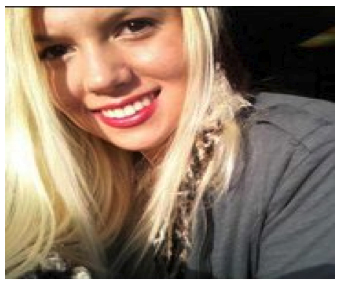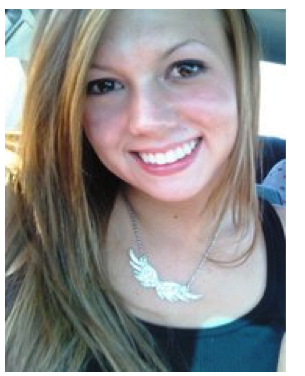| |
Heroin Resurgence/Youth, Heroin's Small-Town Toll, and a Mother's Grief
|
| |
| |
NY Times By DEBORAH SONTAG FEB. 10, 2014
http://www.nytimes.com/2014/02/11/us/heroins-small-town-toll-and-a-mothers-pain.html?_r=0

Launch media viewer
The body of Alysa Ivy, 21, was found in May in a room at this Super 8 motel in Hudson, Wis. Her fatal heroin overdose was the seventh in eight months in Hudson, a town of 13,000. Ben Garvin for The New York Times
HUDSON, Wis. - Karen Hale averts her eyes when she drives past the Super 8 motel in this picturesque riverfront town where her 21-year-old daughter, Alysa Ivy, died of an overdose last May. She has contemplated asking the medical examiner, now a friend, to accompany her there so she could lie on the bed in Room 223 where her child's body was found.
But Ms. Hale, 52, is not ready, just as she is not ready to dismantle Ms. Ivy's bedroom, where an uncapped red lipstick sits on the dresser and a teddy bear on the duvet. The jumble of belongings both comforts and unsettles her - colorful bras, bangle bracelets and childhood artwork; court summonses; a 12-step bible; and a Hawaiian lei, bloodstained, that her daughter used as a tourniquet for shooting heroin into her veins.
"My son asked me not to make a shrine for her," Ms. Hale said. "But I don't know what to do with her room. I guess on some level I'm still waiting for her to come home. I'd be so much more empathetic now. I used to take it personal, like she was doing this to me and I was a victim."

Alysa Ivy
When the actor Philip Seymour Hoffman died with a needle in his arm on Feb. 2, Ms. Hale thought first about his mother, then his children. Few understand the way addiction mangles families, she said, and the rippling toll of the tens of thousands of fatal heroin and painkiller overdoses every year. Perhaps it took Mr. Hoffman's death, she said, to "wake up America to all the no-names who passed away before him," leaving a cross-country trail of bereavement.
In the wake of the prescription painkiller epidemic, heroin, much of it Mexican, has wormed its way into unsuspecting communities far from the Southwestern border as a cheaper and often more easily obtained alternative. Ms. Ivy's was believed to be the seventh fatal heroin overdose in eight months in this town of 13,000 on the St. Croix River near Minneapolis. Two months after her death, and before yet another young Hudson woman died - at a "sober house" - of a heroin overdose in October, nearly 500 townspeople crowded into the First Presbyterian Church for a forum called "Heroin in Hudson: A Community in Crisis."
Ms. Ivy's death certificate, recently released, revealed that a mix of drugs was to blame; the police declined to specify the drugs since her death remains under investigation. But "Alysa was a heroin abuser, and her addiction to drugs killed her," said Patty Schachtner, the St. Croix County medical examiner.
"It's a tightknit community, and these kids all knew each other," Ms. Schachtner said of those who overdosed. "They were not what you might expect. They were not the faces of heroin addiction we see on television."
Nationally, those faces are getting younger and whiter. The most recent federal data show 19,154 opioid drug deaths in 2010, with 3,094 involving heroin and the rest painkillers. Eighty-eight percent of those who died from heroin were white, half were younger than 34, and almost a fifth were ages 15 to 24. Heroin deaths of teenagers and young adults tripled in the first decade of this century.
And those statistics lag behind heroin's resurgence over the last few years, as crackdowns on pill mills have made painkillers harder to get and new formulations have made them harder to abuse. Painkillers remain a far larger problem, but a federal study last year showed that four of five recent heroin initiates had previously abused painkillers, and the amount of heroin seized on the Southwestern border rose 232 percent from 2008 to 2012 as Mexican traffickers moved their product deep into the United States. In Wisconsin, heroin seizures, arrests and deaths have risen sharply. The Gannett Wisconsin Media Investigative Team surveyed county coroners and found 199 heroin-related deaths in 2012, a 50 percent increase over 2011 and almost seven times as many as the 2000-7 average. The first heroin fatality in Hudson occurred about three years ago, Detective Sgt. Geoff Willems of the Hudson police said, and "it was pretty surprising."

Phil Drewiske, 23, who embraced recovery in prison after five overdoses and a dozen failed treatment programs, said he bore some responsibility for introducing heroin to the town. The son of local insurance agents, he started abusing painkillers stolen from his friend's grandfather's medicine cabinet at 13 and discovered heroin at 16, he said, "at a time when people portrayed it as a dirty drug for homeless people."
"But when I discovered the high," he said, "it put OxyContin to shame."
He would buy heroin from Mexican dealers in Minneapolis, who gave him a prepaid cellphone and "chirped" him when his order was ready, he said. He then sold it in Hudson to, among others, Ms. Ivy's boyfriend, "knowing it was going to Alysa" and to "another guy who died here."
"I was getting heroin for these people, and even if it wasn't their first time, it was close," he said. "Being the one who enabled that is pretty humbling. You get a guilty conscience. Even though they made a decision."
Mr. Drewiske was speaking in Ms. Hale's immaculate kitchen overlooking three acres of snowy woods. Since her daughter's death, Ms. Hale, slender with cascading, feathered hair, has befriended Mr. Drewiske and some of Ms. Ivy's "user friends" in an effort to understand her "dark, secret world."
Her daughter's habit began "like most kids in this town, at the pad of a doctor," said Ms. Hale, a nurse. After her high school graduation, Ms. Ivy had her wisdom teeth extracted, and the dentist prescribed OxyContin. An outgoing, free-spirited artist who found Hudson boring after a childhood in the Dallas area, Alysa was seduced by the potent painkiller, developed an addiction and moved on to heroin.

Karen Hale says the belongings remaining in the bedroom of her daughter both comfort and unsettle her. Ben Garvin for The New York Times
In Minneapolis on Thursday, Ms. Hale slowly circled the Taco Bell where, she learned recently, her daughter used to meet her dealers. "I wonder, wasn't she ever scared?" she asked Mr. Drewiske. "Maybe I watch too many movies, but these guys would be packing, right?"
Ms. Ivy was moderately functional in the outside world, holding down jobs at places like Walmart and Subway and maintaining a serious if tempestuous relationship with her boyfriend. At home, though, she was increasingly "like a tornado," constantly locking horns with her mother. (Her father died in 2008.)
"She screamed, lied to me constantly and stole everything that wasn't locked up or nailed down - my jewelry, my TV, my clothes, my pots and pans," Ms. Hale said. "It felt like such a violation, but what do you do? Do you call the police on your own child? She was always trying to stop it. She knew how deeply it was hurting me. She would leave me sweet little notes. But then she would disappear for days, crash a car, tell me she hated me.
"She was in the grip of something beyond her control, but I would get angry and I would feel shame," Ms. Hale said. "My friends would be bragging to me about their kids' getting accepted to college, and what was I supposed to say? 'She only put one needle in her arm today'?"
Occasionally, her daughter would drop her guard. Once, Ms. Hale found her sobbing, arguing with her reflection in the bathroom mirror: "You are an addict! But I don't want to be an addict!" Ms. Ivy let her mother try to detoxify her, using hot baths, Epsom salts, ibuprofen and diarrhea medication.
"It was like an exorcism," Ms. Hale said.

Since losing her child, Ms. Ivy, shown, Ms. Hale has reached out to addicts in an effort to understand and help them.
It did not work. Eventually, Ms. Hale did call the police, and her daughter was arrested on a charge of disorderly conduct. She had other encounters with the law, too, and this got her help: a short stint in detox, courtesy of the county. But the government would not pay for inpatient treatment, and Ms. Hale, uninsured, could not afford to send her daughter an hour away to Hazelden, one of the best-known rehab programs in the country.
Still, after the detox, in early 2013, Ms. Ivy abstained from heroin for 64 days. To mark a change, she peroxided her hair. Ms. Hale told her that she looked like Marilyn Monroe. "More like Gwen Stefani," her daughter replied.
During that period, Ms. Hale was shuttling to Michigan to care for her ailing mother. In mid-May, she answered the phone there. Her son, Collin Ivy, said: "Mom, are you sitting down? You need to. It's bad, Mama. It's Alysa."
When Ms. Hale came face to face with the medical examiner for the first time, she said, "I knew in my heart that one day I would meet you."
Ms. Hale's mother died after Alysa. Collin graduated from college and moved to Colorado for a job. "Karen could have curled up in a ball and hidden away," said Ms. Schachtner, the medical examiner. Instead she set off on a quest to get closer to her daughter. She grilled Ms. Ivy's friends and retraced her steps, even visiting underground "rig hubs," injection centers where addicts use clean needles and have access to naloxone, an overdose reversal medication.
Gradually, Ms. Hale said, her fear and judgmental attitude about addiction have given way to compassion and activism. Never before political - she did not know the mayor's name - she has now testified at the State Capitol, advocating a broader use of naloxone and a "good Samaritan law" that would grant limited immunity from drug prosecutions to those who call 911 or otherwise help an overdose victim.
She has also taken under wing seven young addicts, coaching them on how to reveal their problems to their parents, preaching to them about safe needles and naloxone, and giving them an ear.
"I know my boundaries," Ms. Hale said. "I will not give them money. I will not let them come to my home. If they are hungry, I will meet them at McDonald's. I'll take them to a clinic to be assessed, drive them to a treatment hospital."
"It soothes some of the guilt, fills some of the void," she said. "Basically, I wish there had been a Karen out there helping my daughter."
|
|
| |
| |
|
|
|